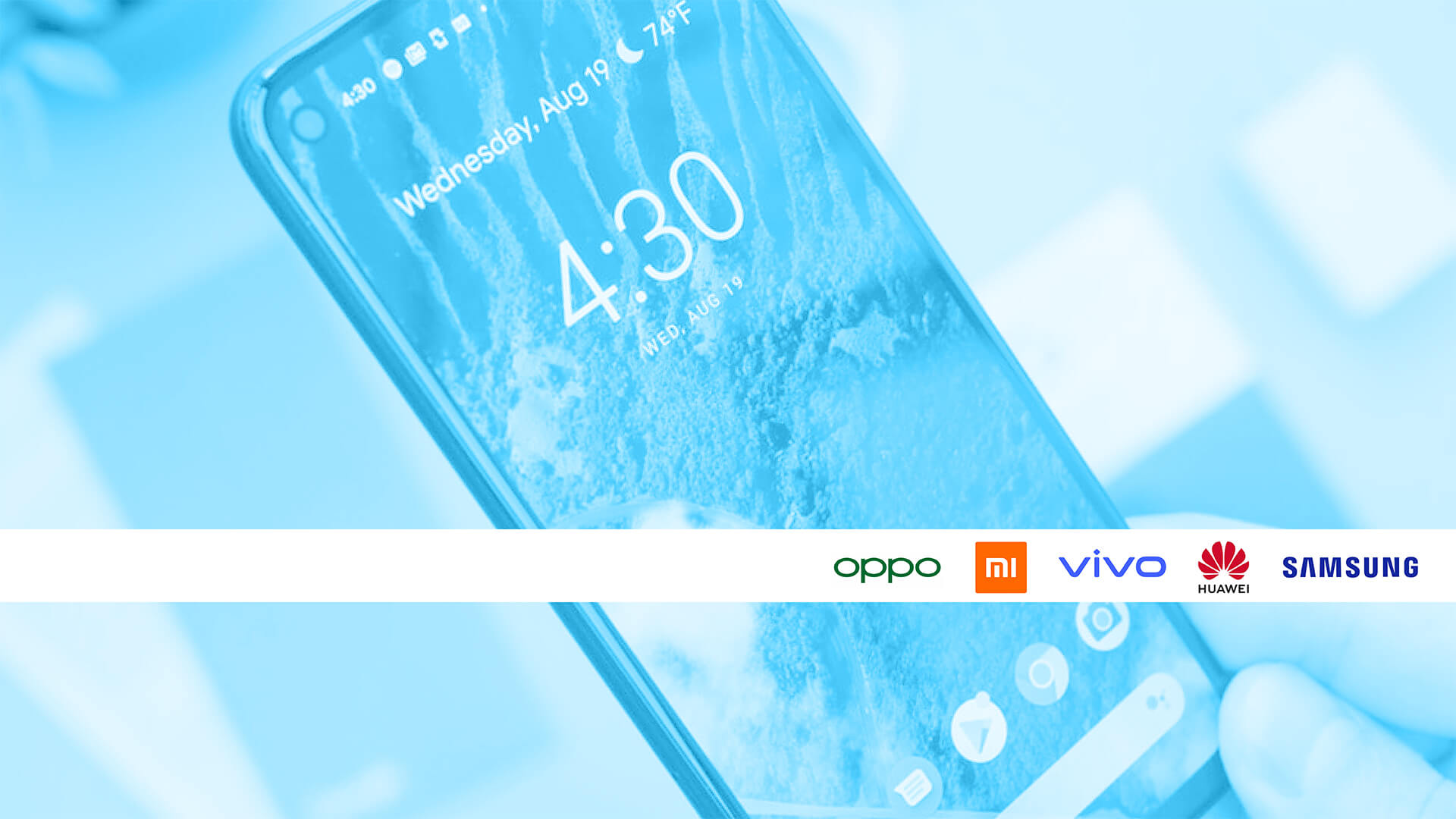An introduction to alternative App Stores: 5 OEMs every marketer needs to know
Over 204 billion apps were downloaded worldwide in 2019 and the number of mobile app downloads is expected to surpass 285 billion by 2022. With more competition in the App Store and Google Play Store than ever before, it is important to identify alternative ways to target your audience at the right price. Alternative App Stores created by OEMs (original equipment manufacturer) offer marketers opportunities to push towards their goals by targeting untapped audiences. In this guide, we outline how you can gain an edge over your competitors with alternative app stores and five app stores every marketer should know.
Alternative app stores 101: What are OEMs?
In the mobile industry, OEMs refer to companies who manufacture phones which also have their own apps and app stores. For example, Samsung – which shipped 80.4 million smartphones in the third quarter of 2020 – is a popular Android OEM. Marketers can use these alternative app stores to reach untapped audiences for user acquisition campaigns and app growth.
Getting set up with multiple alternative app stores can be a complex process in comparison to only use the App Store and Google Play Store, but the advantages vastly outweigh the initial work. OEMs can be used to achieve your growth goals as a result of reaching new marketers. You can also benefit from better exposure and higher user acquisition at a lower CPI (cost-per-install). Moreover, OEMs are free from fraud because there are no barriers between the budget holder and the OEM itself – ad placement is controlled by the OEM so you are protected from fraud. If users are loyal to a particular OEM, this can also benefit your ads by association with a trustworthy brand.
5 alternative app stores every marketer needs to know
There are several alternative app stores marketers can use to boost user acquisition and increase engagement. Here are four industry-leading alternative app stores with large untapped audiences you should know.
Huawei AppGallery
Huawei ranks as the third-largest smartphone manufacturer with a share of 14.7% of the market. Moreover, the Huawei AppGallery serves over 500 million mobile users worldwide and 350 million users actively search for their favorite apps on the platform each month. This contributes to up to 750 million daily downloads.
Xiaomi GetApps
Founded in 2010, Xiaomi sells hardware and software worldwide. The company is expanding to become a global brand and became the youngest company on Forbes’ Fortune Global 500 list in 2020. There are over 500 million Xiaomi smartphone users in 220 regions. A case study shows that the American classical music app, Opera News, used the Xiaomi marketing platform to achieve more than a million activations per month in 2019.
As one of the top five mobile brands in over 40 markets, the Xiaomi marketing platform offers an alternative to Google Play and Apple’s App Store. For example, Xiaomi’s India market has increased by over 120 million within a year and reached 280 million targeted users with user acquisition ads. Users can be targeted by gender, age, region, time zone, language, and device type. The platform also offers ad frequency control.
OPPO App Market
Consumer electronics company OPPO operates in over 40 countries and sells products in 320,000 retail outlets, shipping 115.1 million units in 2019. OPPO’s Color OS has more than 300 million MAUs (Monthly Active Users) and the company’s App Store offers more than 1.2 billion MAUs. The platform offers several ad formats to create strong impressions, such as splash screen ads, icon ads, banner ads, and push ads. With sub-brands like Realme and OnePlus Oppo covers the entire spectrum from low to high-end devices
Galaxy Store
Formerly known as Samsung Apps and Galaxy Apps, the Galaxy App Store is the default app store for Samsung devices. This is pre-installed on Samsung smartphones and Samsung Gear. The app store is available in 125 countries and includes apps for Android, Windows Mobile, Bada, and Tizen. The Galaxy App Store makes personalized recommendations based on user preferences, seasonality, and events. Users can use the ‘My Galaxy’ tab in the Store to customize their device and get exclusive in-app purchases for popular games.
Vivo App Store
The Vivo App Store has over 74 million MAUs worldwide with a focus on markets such as India (with the second largest market share, Indonesia (with the fourth largest market share), and Southeast Asian countries. Vivo app store ad formats include push ads, banner ads, splash ads, and floating icon ads.
How AVOW can help you leverage OEMs’ untapped audiences
Avow’s strong partnerships with OEMs
AVOW has partnered with OEMs worldwide to help clients benefit from alternative app stores. We are a dedicated team of experts in OEM mobile inventory who can guide you through the process of working with OEMs. For example, we announced our key partnership with Xiaomi Mi Ads in December 2020. We offer a consultative approach with the entire campaign cycle, including:
- how to get listed on alternative app stores
- how to optimize for best results
- how to track performance.
This enables marketers to benefit from new revenue streams as a result of Avow’s partnerships. Moreover, clients can reach untapped audiences who cannot be accessed via social, search or SDK networks.
Avow’s Performance Optimizer
Another way Avow can help you stay ahead of the curve with OEMs is with our performance optimizer. This in-house solution optimizes inventory in real-time according to your KPI targets and current engagement levels. Avow’s Performance Optimizer ensures you are pushing the limits of what your performance campaign can achieve with optimal ROAS.
For more insights into how Avow can help you stay ahead of the curve, read our introduction to OEMs.
>>> Contact us to learn more and start your campaign today! <<<





